Travel Photography Tips & Insights, Travel Stories from the Road
Camogli: A Photographer’s Dream
The first time I went to Camogli, I had zero expectations. I didn’t Google it. I didn’t have a plan. I just started walking—classic me. When I reached the entrance of the town on the top of a hill, I stopped. Right away, I felt it. I didn’t know what I was walking into, but I knew it was going to be something special. The color of the buildings, and the remarkable color and clarity of the water were spectacular. I knew I was in for a treat as well when I saw all the fishing boats parked there in the harbor as I’m definitely a fan of seafood, too.
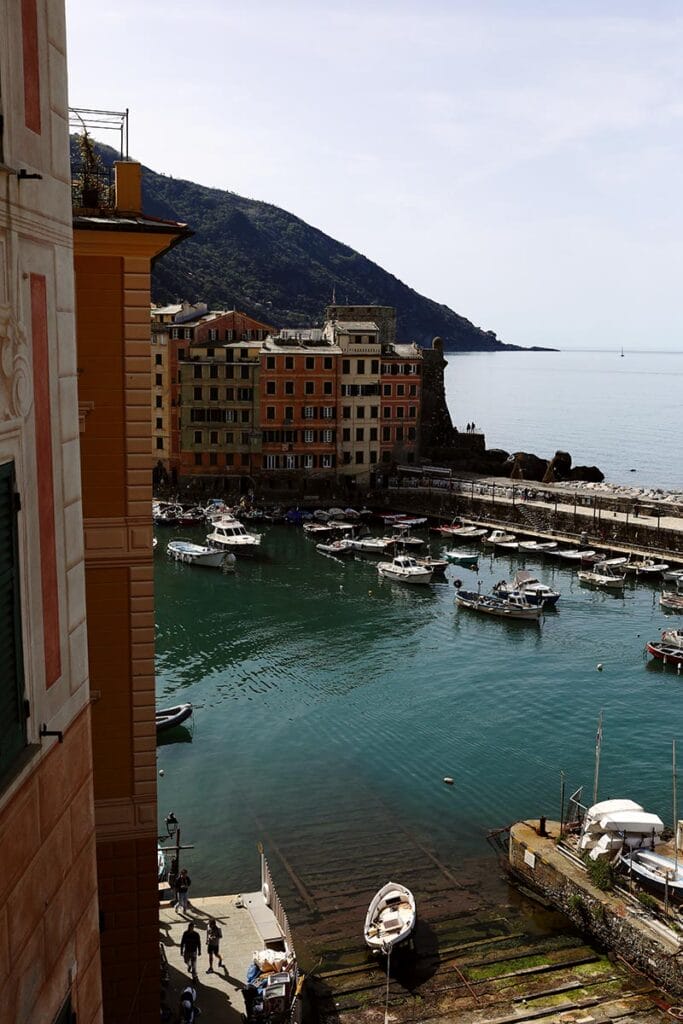
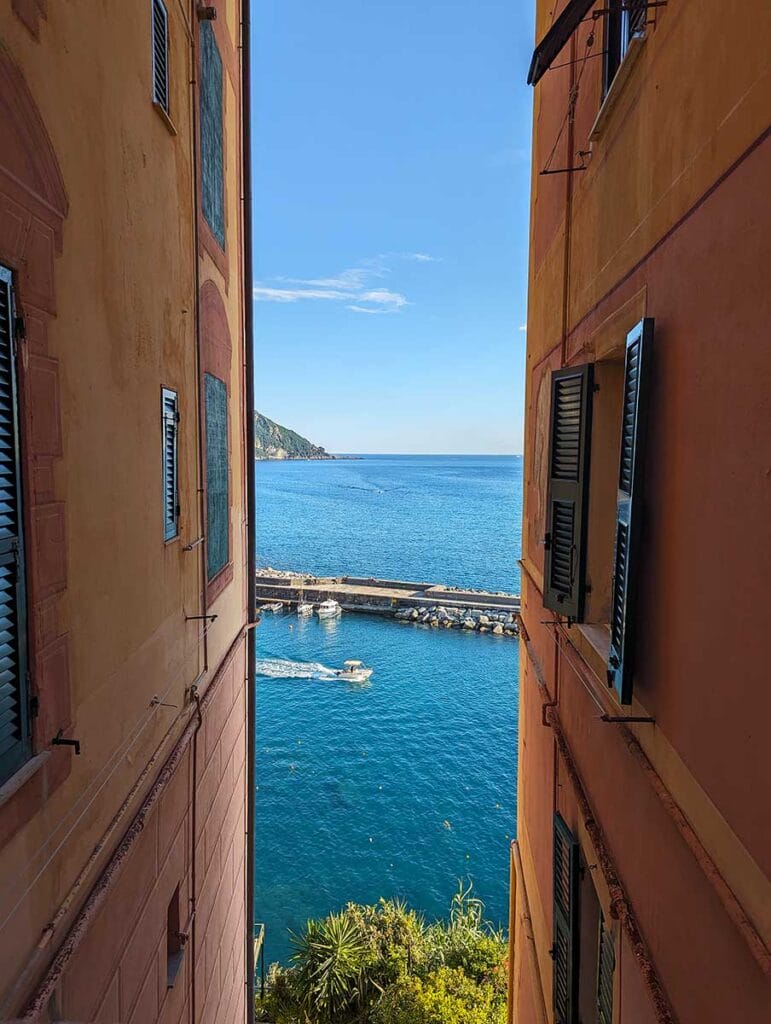
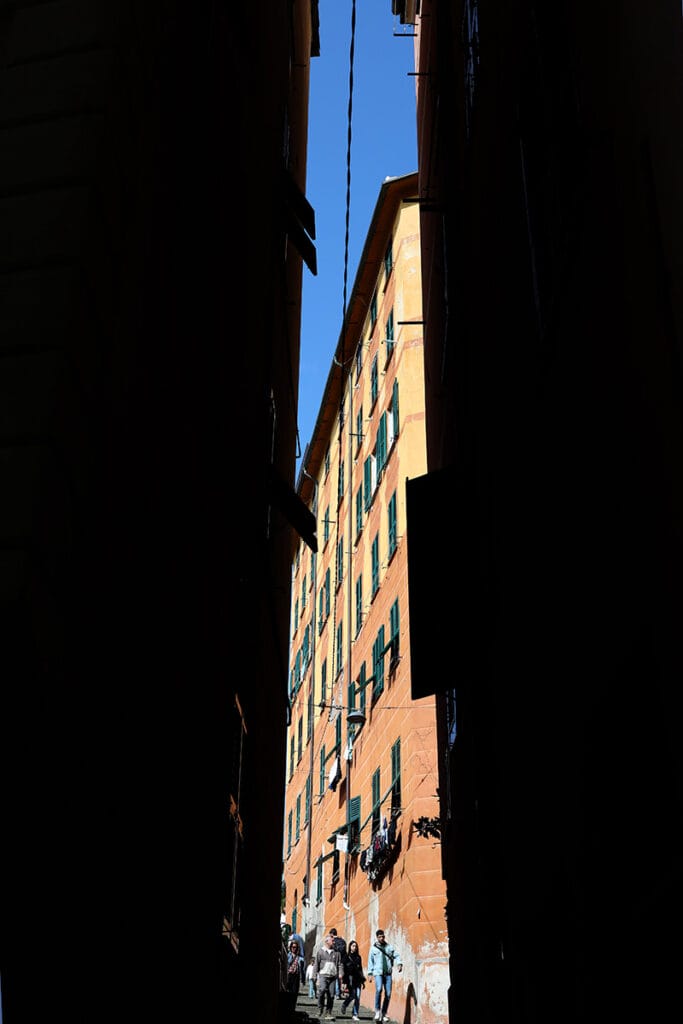
After descending into the town via a long staircase, the initial view you see of the town is the small, quaint marina—with most of the town still partially hidden, surrounded by bursts of color and the quiet hum of real Italian life. There are little walls to sit on, small bars and cafes with outdoor seating – people chatting and walking their dogs – you name it. It’s a perfect place to just sit and relax.

I first visited in the off-season, which added to the magic. Locals were out walking their dogs, chatting as they strolled— just living slowly. In the summer, I’ve been told (and have now seen for myself), the town gets packed—beach-towel-to-beach-towel packed. But when you’re not there in the middle of August, Camogli has this relaxed, lived-in vibe that’s honestly hard to beat.
As you continue exploring, there’s this small tunnel near a gelateria that spits you out onto the main promenade. I remember my jaw dropping. No joke. The palazzi tower above you—tall, narrow, painted in those bright, typically Ligurian colors, with so many windows I began to question what was real and what wasn’t.

The Painted Illusions of Camogli
As you continue exploring, there’s this small tunnel near a gelateria that spits you out onto the main promenade. I remember my jaw dropping. No joke. The palazzi tower above you—tall, narrow, painted in those bright, typically Ligurian colors, with so many windows I began to question what was real and what wasn’t.
That’s something I learned while wandering: a lot of the windows and decorations are actually painted on, or are false. A guy I was chatting with over a beer explained that centuries ago, property taxes were sometimes based on the number of windows people had.
So what did people do? They faked it. Trompe-l’œil. Fake windows, fake balconies, even fake shutters—all painted so convincingly that it takes a moment to tell what’s real.
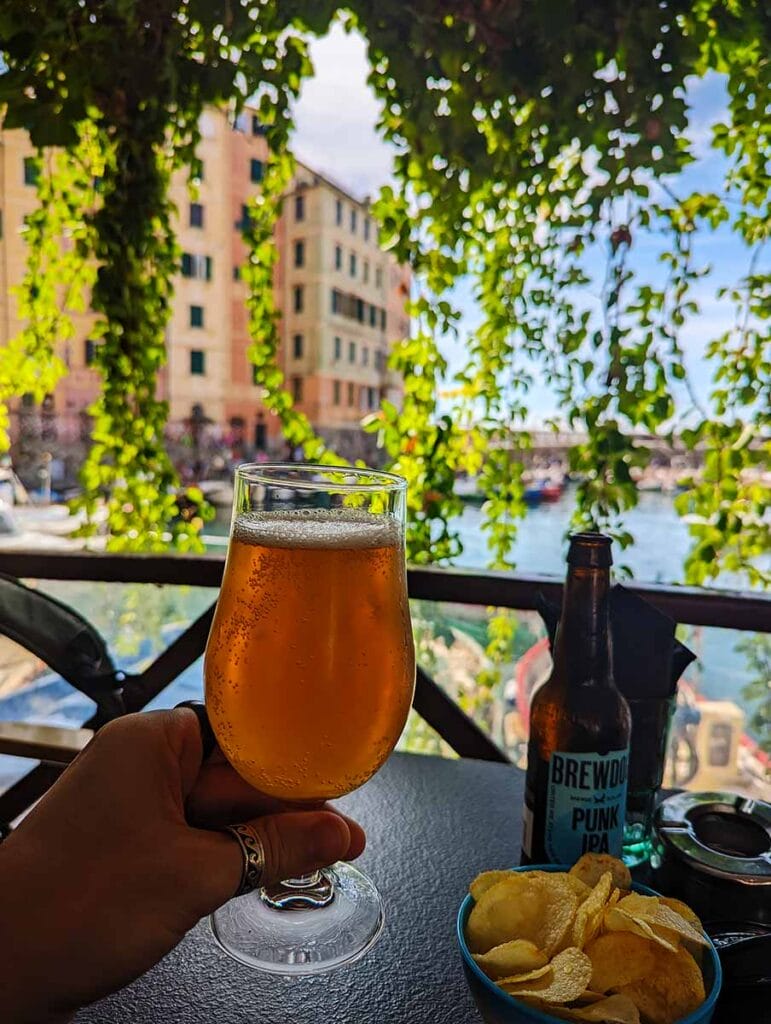
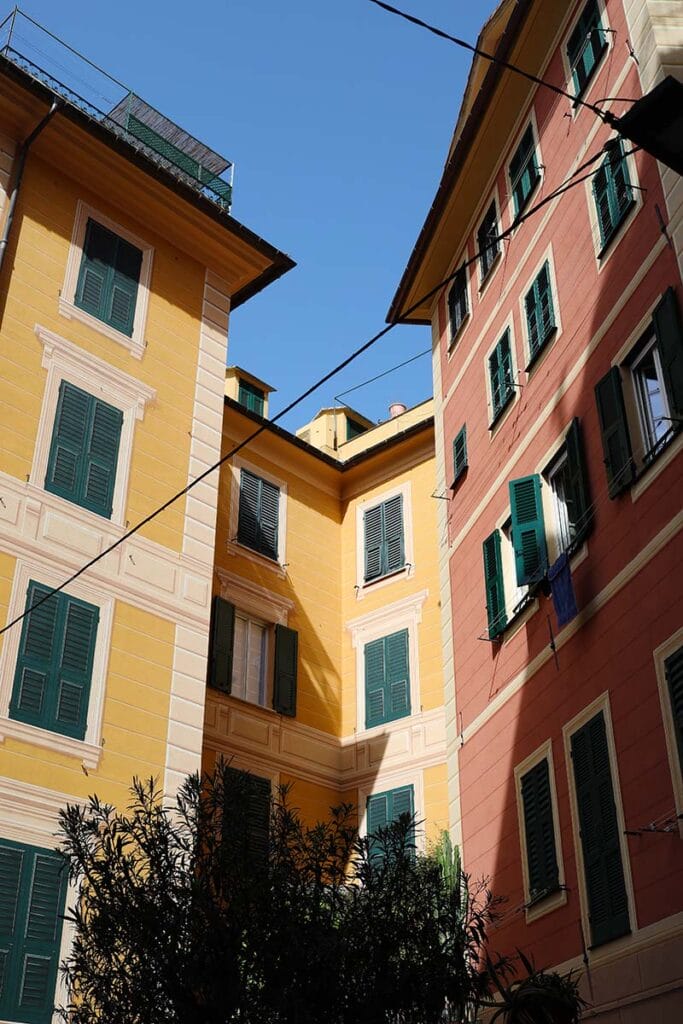
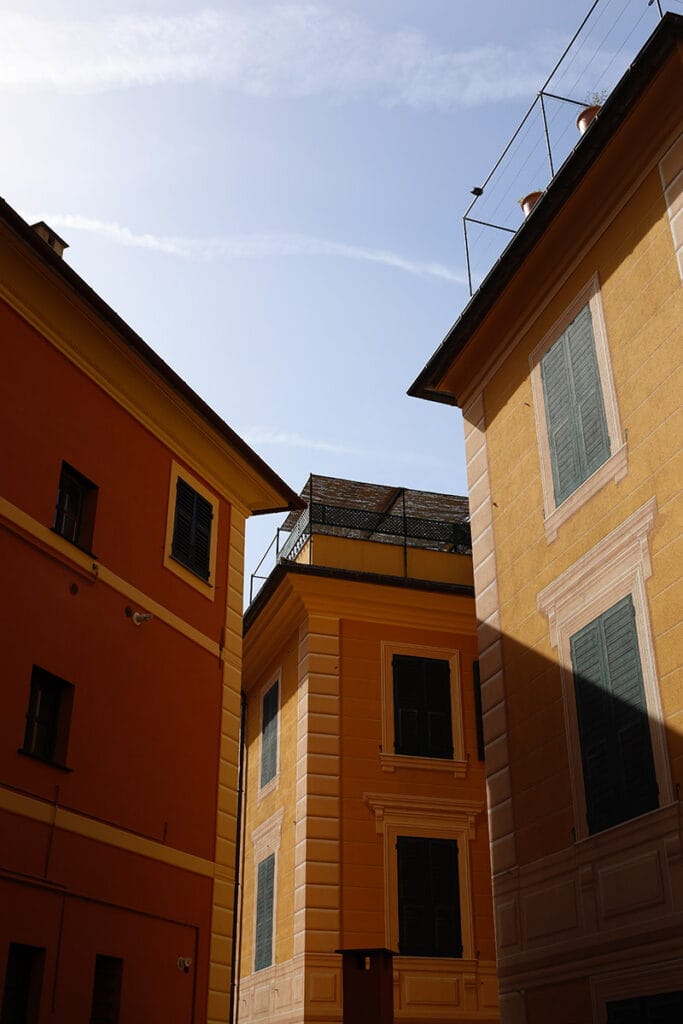
How Camogli Got Its Name
I overheard a few older locals chatting with people who I assumed were visiting for the first time, and I kept hearing the word mogli. That’s when I learned how Camogli supposedly got its name. One story says it comes from la casa delle mogli—the house of wives—since sailors used to go out to sea for months, leaving their wives behind in this close-knit community.
But there’s another theory, and honestly I like this one more: it comes from the Ligurian dialect ‘ca a muggi’, meaning “houses piled together.” And if you’ve seen Camogli, it clicks immediately. Essentially, Camogli looks like someone built a LEGO village without following the instructions, —and it somehow turned out better that way.

A Village Worth Returning To
I’ve been back to Camogli multiple times now—partly because it’s close to where I live, and partly because it just never gets old. Whether you arrive on foot or boat (which, by the way, gives you one of the best views of the village), the way Camogli reveals itself is always dramatic.
I once took a boat trip for a friend’s birthday—we cruised from Portofino, past San Fruttuoso, around Punta Chiappa and ended up in Camogli. You can do the same trip on a ferry if you’re not feeling private-boat fancy, and honestly, the views are just as good.



One of my favorite things about this village is how layered it is. Just when you think you’ve seen it all, you turn a corner or walk a little further down the lungomare, and something new catches your eye. The really cool signs marking the various bagni or even the tree teetering on a cliff. And—arguably the cherry on top, if not the whole cake—the Basilica of Santa Maria Assunta.
From the outside, it is an almost fortress-like presence, perched on a rocky outcrop by the sea. It looks slightly weathered like it’s been bracing itself against centuries of wind and salt. What completely blew my mind was the inside. I was expecting something simple—but as soon as I stepped inside, I stood in awe.
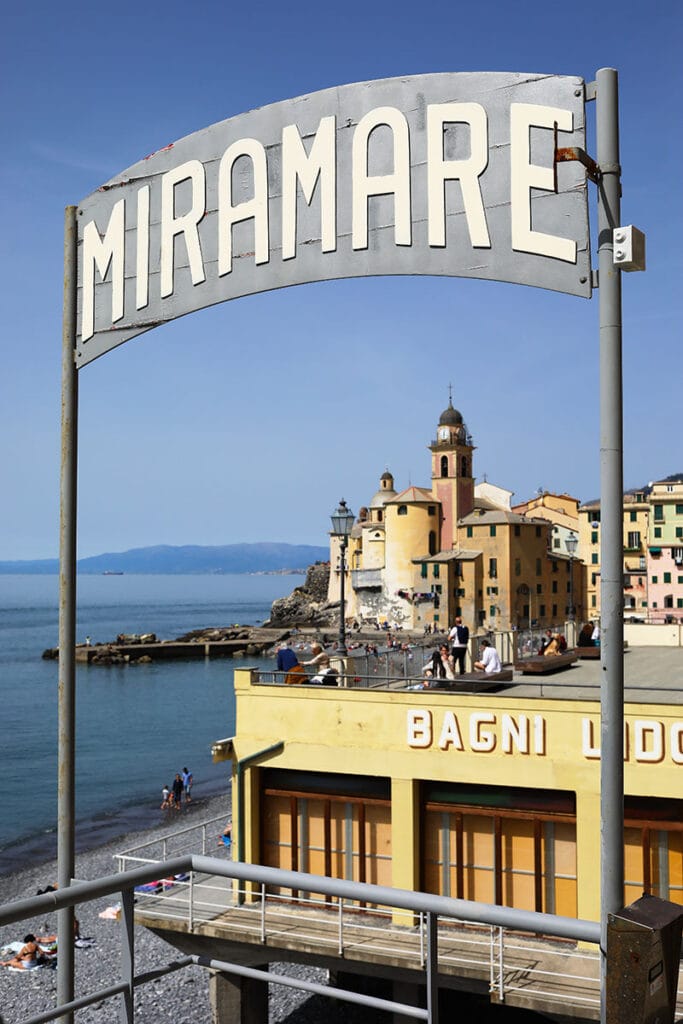

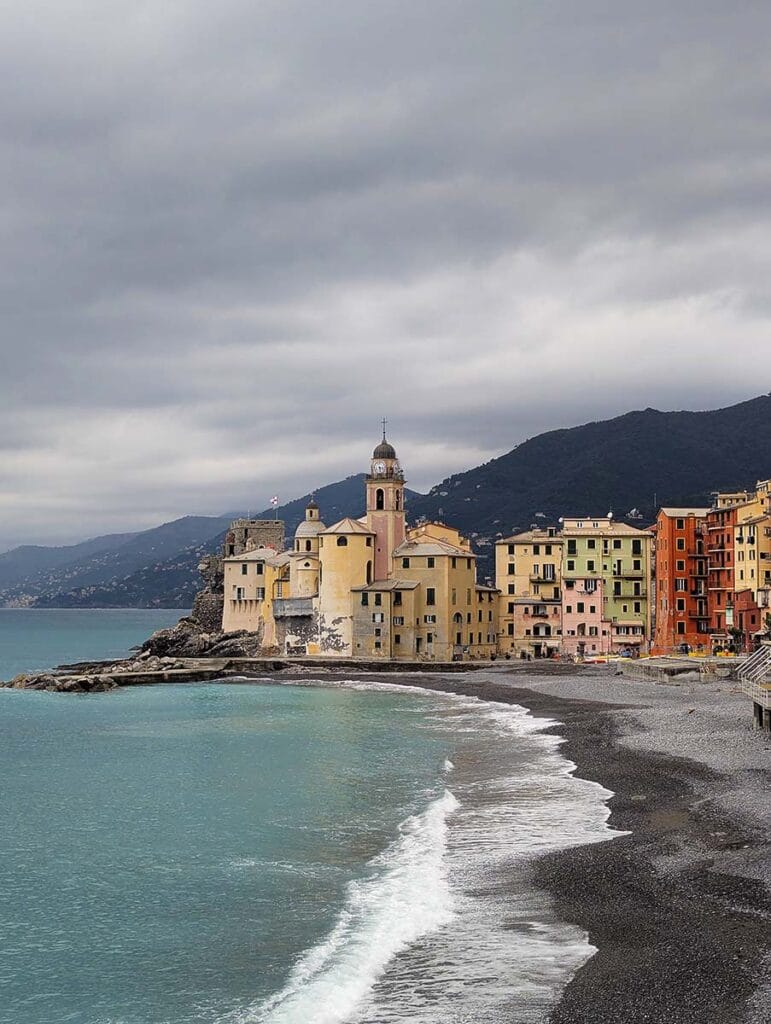
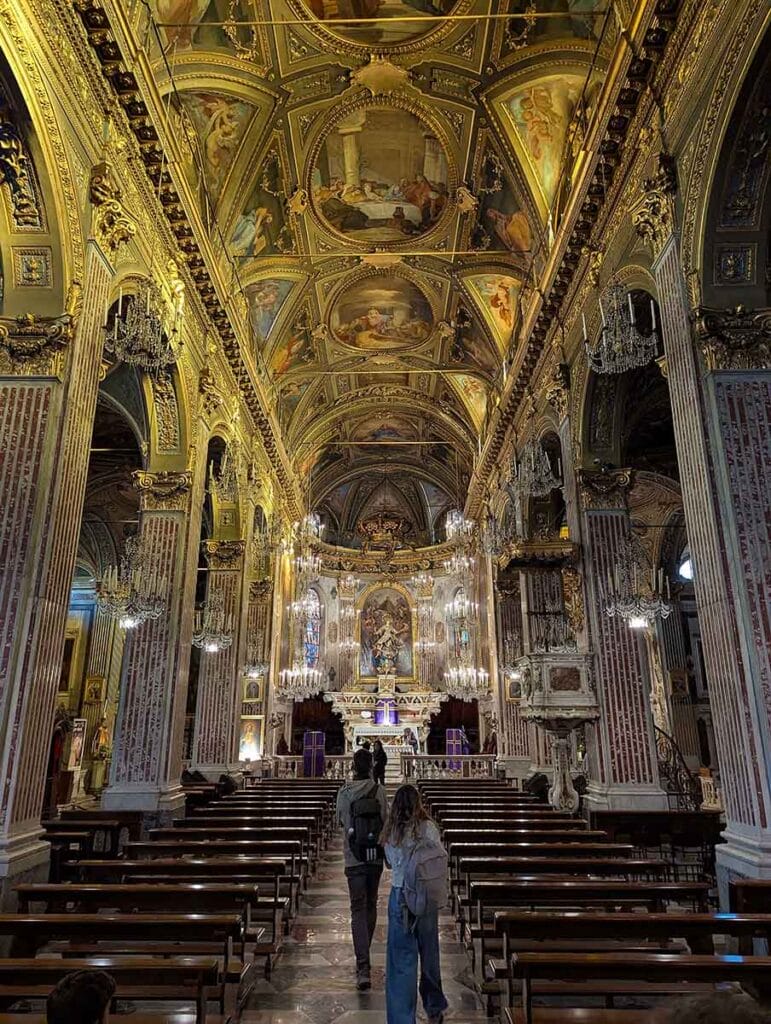
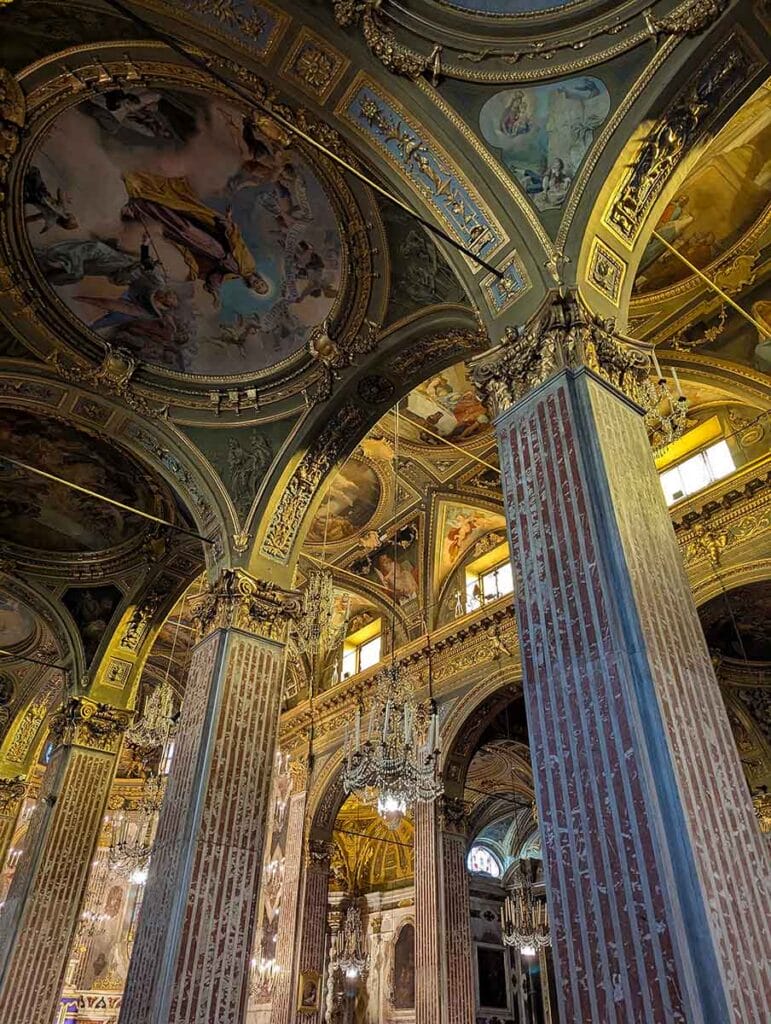

It’s gorgeous. Gold everywhere, frescoes, intricate carvings—it’s like someone went all out on this little seaside church, tucked away in a village that most people don’t even know exists. I kept thinking, How? How did all this detail end up here, on what’s essentially a fortified island? History really blows my mind sometimes.
Just next to the basilica is the Castello della Dragonara, a medieval fortress that once defended the town from pirates. Or so they say (more on them later) These days, it’s more of a lookout spot,, but you can still feel that old-world weight of history when you stand at the edge and gaze out toward the horizon. It’s one of those places that makes you want to slow down and take a moment of silence. You also get great views of the promenade—plus, it’s the perfect place to hang out and people watch.
Of course, no visit to Camogli would be complete without the food. Now, I’m not going to pretend I’m a food blogger, but you know I’m all about eating well. This area of Liguria is famous for focaccia and seafood pasta—but the one thing I always make a beeline for here are the fried fish cones. Imagine a paper cone filled with freshly fried seafood—anchovies, calamari, maybe some shrimp and scallops—served hot and crispy with a slice of lemon. It’s the kind of snack you want to munch on while wandering around the marina with salty air on your face.
Camogliesi: The Pastries You Didn’t Know You Needed
Sure, Camogli definitely has a few respectable gelato spots, but— the Camogliesi? Mamma mia, these pastries are on another level. A soft pastry filled with a rich, flavored cream, with options like Rhum, Caffè, Amaretto, and Gianduia. They even come out with a salted caramel flavor that is amazing, too.



Each one is covered in a cocoa-based shell, and either dusted with powdered sugar, sprinkled with thin chocolate sprinkles, or topped with hazelnuts. The first ones I tried were Gli Originali, and they are something else. Seriously chocolate and covered with powder sugar.
The creamy mousse-like chocolate filling was laced with rum and what tasted like pure alcohol. They are so good, and also so unapologetically boozy. The kind of dessert that makes you pause mid-bite and go ‘Wow…who on earth invented this?!’
Gli Originali Camogliesi taste like a pastry dreamed up by a pastry chef who went on a bender with rum-drinking pirates (yep, there’s the pirate theme again)—and then decided to throw in some pure alcohol for good measure.
You can find them at Revello, the pastry shop that apparently invented them. Fun fact: Revello also has a variety of other treats, including lactose-free almond pastries, and seriously good focaccia.



An Unforgettable Village, Away from the Crowds
So yeah, Camogli caught me off guard in a variety of ways. It wasn’t on my radar at first, but it instantly became one of those places I keep coming back to—not just because it’s now close to my home. It’s got all the coastal Italian charm you’d imagine, but without the massive crowds you find in Cinque Terre (and honestly, I’m grateful for that).
If you ever find yourself in Liguria, skip the lines in Cinque Terre for a day. Hop on a train, or do what I did and just start walking from Recco. Camogli—and an unforgettable time with breathtaking views—are waiting for you.




Fantastic!